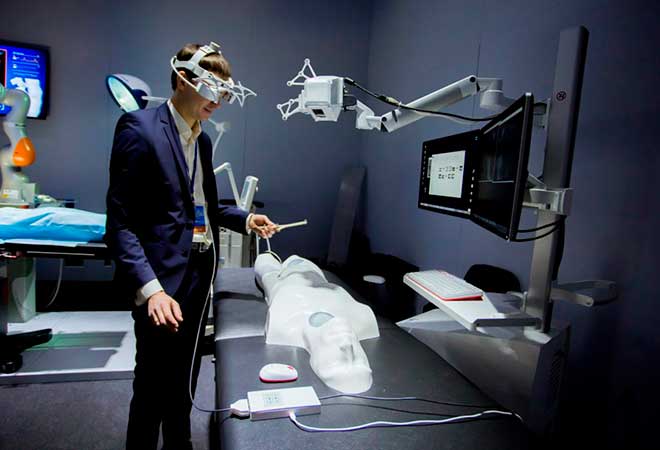From training sessions for medical students to eye diagnostics for patients, virtual reality (VR) and augmented reality (AR) glasses are no longer a rarity in medicine. Health authorities are increasingly giving the go-ahead for various new application areas for the glasses, and investors are also showing interest in the new market. Between 2021 and 2026, it is expected to grow by 35% annually and thus swell to more than US$40 billion by the end of this period. But to what extent can VR glasses be used in medicine?
Ophthalmology
Regarding the use of virtual reality in ophthalmic diagnostics, startup Heru is playing at the forefront. In May 2021, it received $30 million in venture capital from investors, enabling it to launch its first tests on the market as early as August. The principle is simple: VR glasses are used to test patients' field of vision, contrast sensitivity, and color identification quickly and easily. The doctor can call the result shortly after using an intelligent cloud system. It enables fast, efficient, unified vision testing in any doctor's office.
Overcoming fears
Anyone who has seen an MRI (magnetic resonance imaging) from the inside knows that the examination is not pleasant. The University Hospital in Düsseldorf is trying to make this experience easier for young patients. Under the motto "Avoid anesthesia with penguins," the clinic has launched a project to help children in oncology stay calm during an MRI examination and thus avoid possible anesthesia. Before the planned MRI visit, the examination is simulated using VR glasses and commented on by two friendly cartoon penguins, which playfully explain to the children what happens in the "MRI tube." This way, there should be no unpleasant surprises for the children later, and anesthesia should be prevented.
Operations
Recently, the FDA approved an AR glasses system for knee surgery (Food and Drug Administration). AR glasses have a see-through lens and thus can overlay virtual images and information on top of the "real world." Surgeons can, therefore, easily see the knee being operated on and other superimposed details through the glasses. For example, the glasses use a camera to assess the alignment of the instruments and the knee joint in the surgeon's field of vision without requiring him to change his surgical technique. Here, the knee joint to be used is marked with QR codes that can be read by the camera and tracked in a three-dimensional space.
Training for students
Surgeries are not accessible and often require a lot of experience and skill. At the University Hospital Bonn, young medical students are introduced to surgery using VR and learn more about human anatomy without stress and responsibility using "Dimensional Animations." At the University Hospital in Ulm, students can use VR goggles to communicate with virtual patients as avatars. This unique training method was introduced due to Corona, as the compulsory internship in the rescue was canceled. But not only patient contact but also simple activities such as blood sampling and surgical suturing can be learned by the students using VR glasses.
Virtual reality has long come to medicine. Equipped with VR goggles on their heads, patients with mental disorders, for example, enter a virtual world under the supervision of their therapists to combat phobias, eating disorders, or pain. The method is demonstrably effective, often less expensive, and has a lower threshold than actual therapy.

